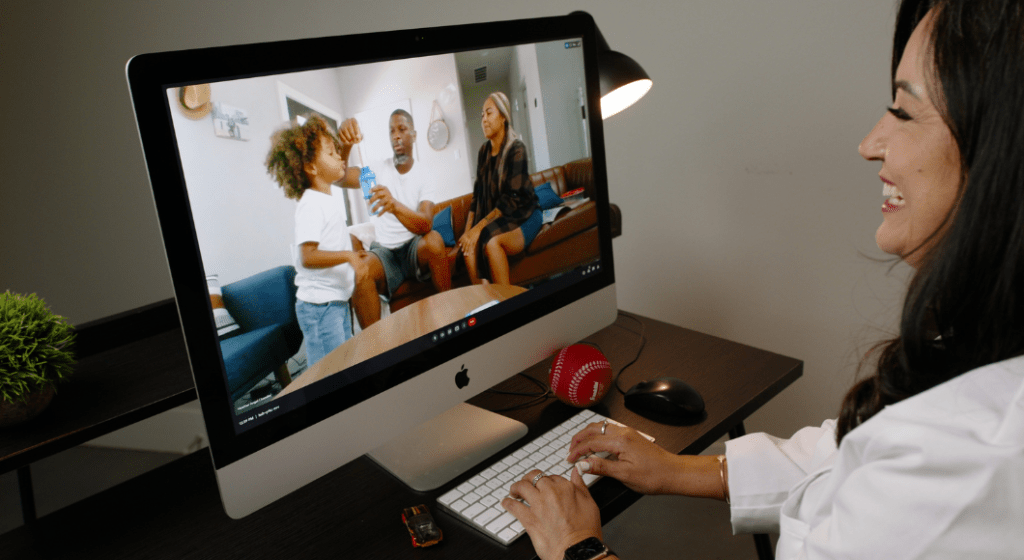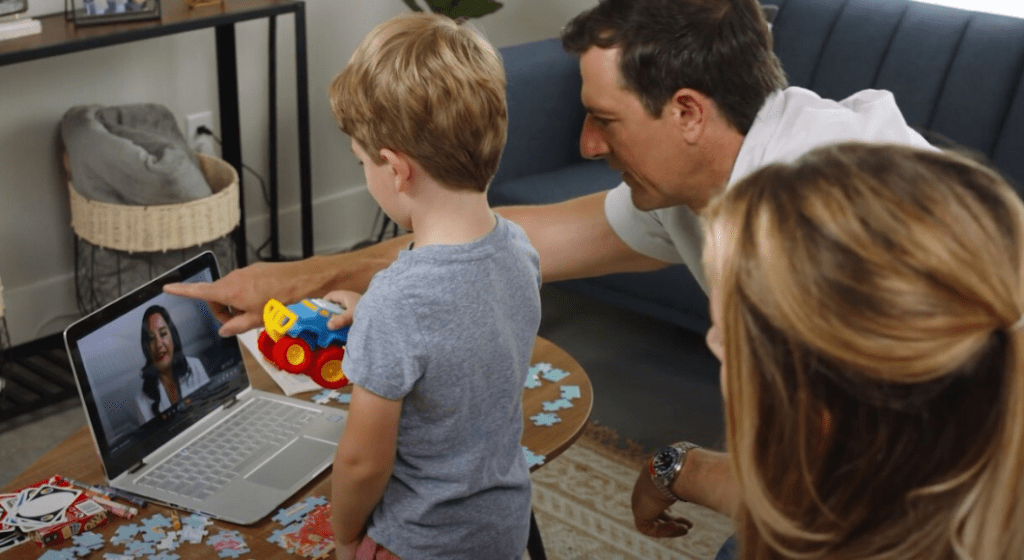Disclaimer :: This article is sponsored by As You Are to share its new services with Texas families. The article writer created this resource based on her own experiences as a mother parenting a child with autism.
If you were fortunate and received an early diagnosis of autism, you may have already started therapies or outside supports during the toddler years. Or, if you’re just starting your journey as an autism parent, let this article help you navigate the processes of obtaining a diagnosis and selecting the right learning environment for your child.
Step 1 :: Early Intervention and Obtaining a Diagnosis
If you think your child might be on the autism spectrum, the earlier you get a diagnosis, the better equipped you’ll be through the elementary years. A diagnosis will also help you get outside support and therapies as well as grants and social services.
You can have your child evaluated locally by a diagnostician or early childhood center, though sometimes the waiting list for an appointment is several months to years long. A great alternative is a virtual diagnostic autism evaluation.
As You Are is a virtual clinic providing autism diagnostic evaluations for children ages 16 months to 10 years via telehealth appointments. Appointments with a trained physician are readily available in Texas, Florida, Georgia, Virginia, Alabama, Kentucky, Ohio, Pennsylvania and New Jersey through video calls. As You Are is breaking geographic barriers for families sitting on long waitlists, helping diagnose more children early in development. As You Are accepts insurance, including Medicaid and TRICARE East. Learn more and get started today at AsYouAre.com/MomCollective.
>> RELATED READ :: 5 Tips for Coping with an Autism Diagnosis <<
 Step 2 :: Choosing the Right School
Step 2 :: Choosing the Right School
Wherever you are in the diagnosis process, by the time you start looking at elementary schools, you probably know your child needs extra support. Knowing the struggles your child has at home, you now have to entrust that the teachers can manage those struggles, too. It’s extremely worrisome, and with good reason — not every school will be up to the challenge. How do you decide?
Public School :: If you’re planning to send your child to a public elementary school, check with the ISD to see if there is a PPCD program in your child’s school district. PPCD stands for Preschool Program for Children with Disabilities, for pre-k, kindergarten, first grade, and second grade. If your child has already received an autism diagnosis, you can enroll him or her in PPCD.
For grades one through five, Fort Worth ISD also has a program for children with disabilities called Reaching Independence through Structured Education (RISE). It’s still full-time, tuition-free elementary school, but the teachers’ aides have had additional training with children with special needs. There are also a handful of teacher aides in the classroom, lowering the teacher-to-student ratio.
>> RECOMMENDED RESOURCE :: Guide to Public & Charter Schools in the Fort Worth Area <<
Private School :: There are many private schools in the Fort Worth area, but did you know that there are schools with support specifically for children with autism?
Hill School serves children in kindergarten through grade 12. It offers more behavioral support than other private schools of similar size and tuition. Key School and Training Center and Wedgwood Academy are other k – 12 private schools serving children with autism as well as children with other learning and intellectual challenges. They both offer smaller class sizes and summer programs.
TCU operates a laboratory school specifically for children with autism called Starpoint School. Though it serves children grades one through six, grade level is not the focus. Starpoint creates achievement-based curriculums for intellectually challenged children, and every child’s goals for advancement are different.
The Bridge of Hope Academy is a small private school serving pre-k to fourth grade, with class sizes as small as three to eight children. It is part of the Hope Center for Autism, which includes applied behavior analysis (ABA) therapies and principles in its curriculum.
>> RECOMMENDED RESOURCE :: Guide to Private Schools in Fort Worth & Surrounding Areas <<
Assessments and diagnosis may be required to enroll in PPCD, RISE, or specialized private schools. If you’re still unsure if your child has autism, or if you’re on a waiting list for an appointment with a diagnostician, there are faster options available to get an assessment. Click here to schedule a virtual appointment with As You Are.

Step 3 :: Integration and Plans for School Success
The realization that your child will be starting full-time elementary school is nerve-wracking. Will my child be okay without me all day, five days per week? Will my child’s teachers be patient and able to handle the daily struggles while also managing 20 other children? Will the other children treat my child differently?
You may have these questions if you’re thinking about integrating your child into the general education classroom. Whichever way you decide to start the school year, keep in mind this decision is not set in stone.
>> MEET MOMS :: Moms of Kids with Differences and Disabilities in the Fort Worth Area <<
My son started in PPCD for pre-k two. When it was time for kindergarten, his teachers and I conferenced and decided to integrate him into the general education class. It was daunting, but it seemed like the right change for him. Of course, being integrated into general education did not come without its challenges, even though he had the necessary support systems.
When you have a child with an autism diagnosis, or any type of disability, you will become all too familiar with the term individualized education program (IEP). Working together with your child’s teachers, administrators, and therapists, you will help develop a plan specifically for your child to reach academic and personal success. Your child will have an IEP whether you decide to integrate or not. IEPs are also not set in stone and can be changed at any time.

If you feel the best learning environment for your child is in general education, the IEP will help see him or her through. Some supports to consider are individual or small-group instruction and testing; visual, audio, or sensory supports in the classroom; and frequent structured breaks in your child’s school schedule. My son’s teachers have all had a “calming corner,” complete with quiet activities and fidgets to help him reset when he needs a break. Brainstorm with your child’s teachers — no idea is a bad idea if it helps him or her succeed.
 Do you have questions about your child’s development? As You Are is a virtual clinic providing autism diagnostic evaluations for kids between ages 16 months and 10 years old, using exclusively telehealth appointments. As You Are is breaking geographic barriers for families sitting on long waitlists, helping diagnose more children early in development. For the latest info, follow As You Are on Facebook, Instagram, LinkedIn, and Twitter.
Do you have questions about your child’s development? As You Are is a virtual clinic providing autism diagnostic evaluations for kids between ages 16 months and 10 years old, using exclusively telehealth appointments. As You Are is breaking geographic barriers for families sitting on long waitlists, helping diagnose more children early in development. For the latest info, follow As You Are on Facebook, Instagram, LinkedIn, and Twitter.













